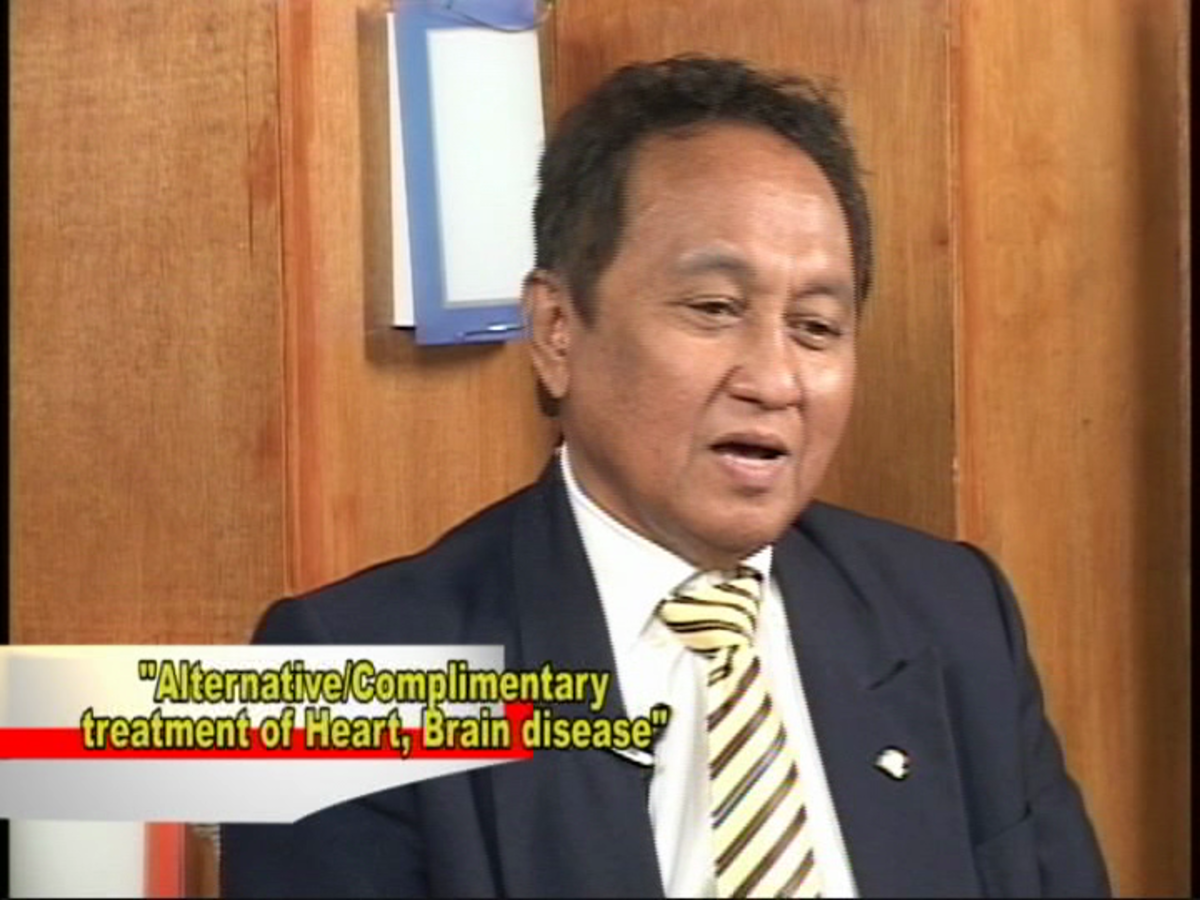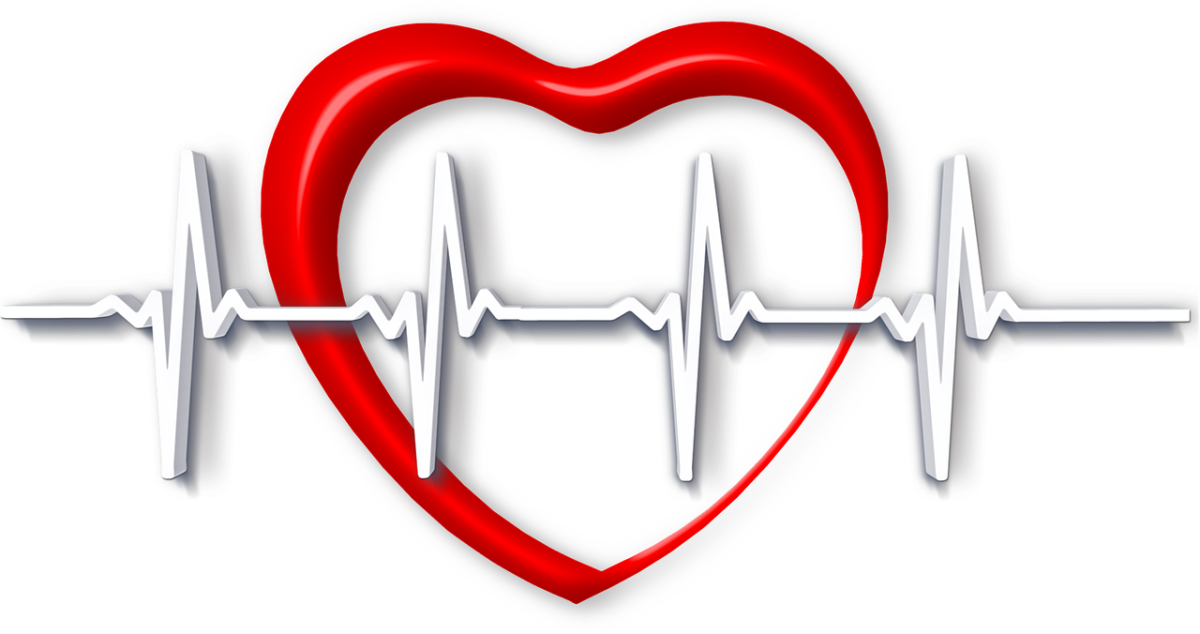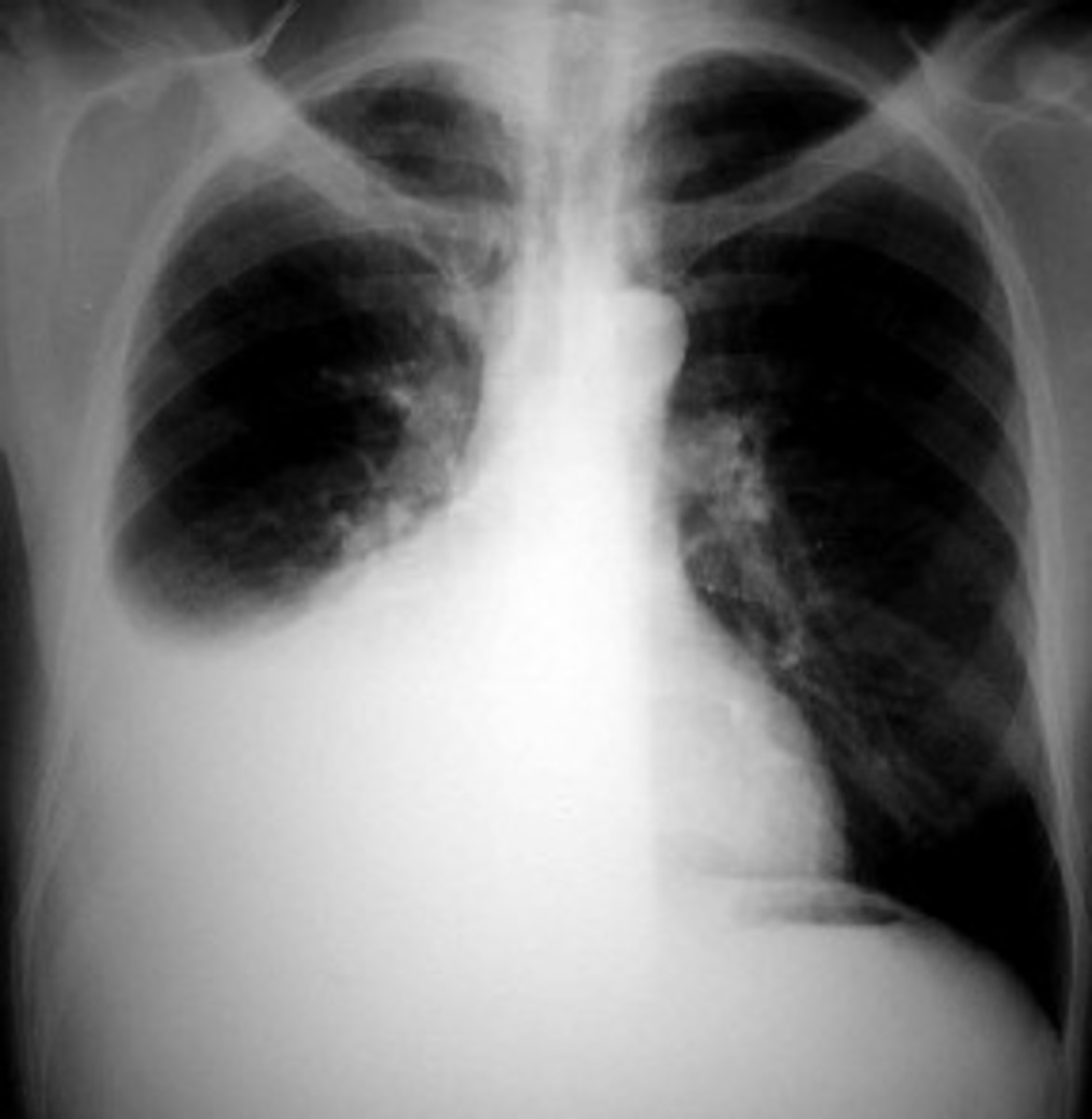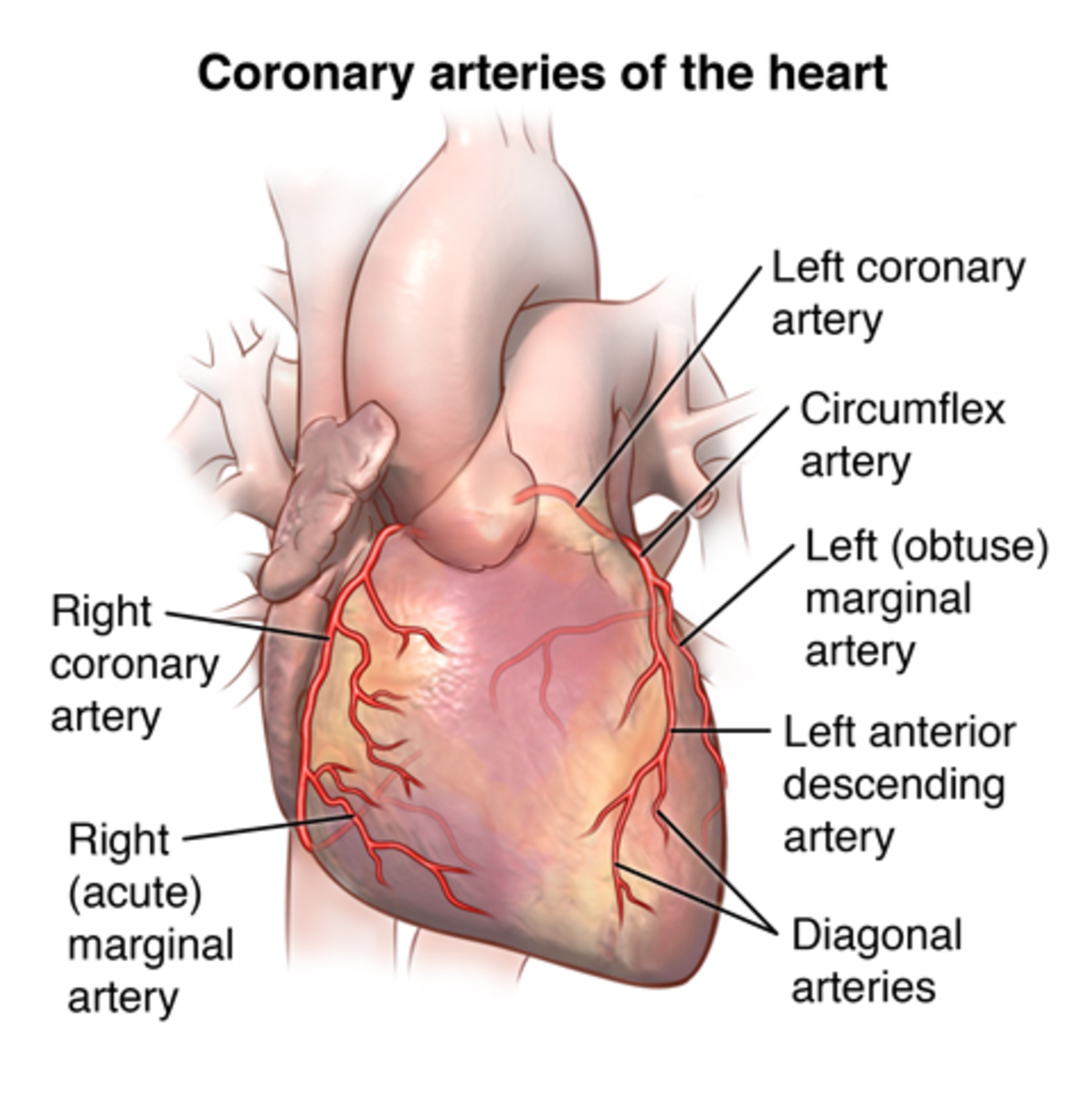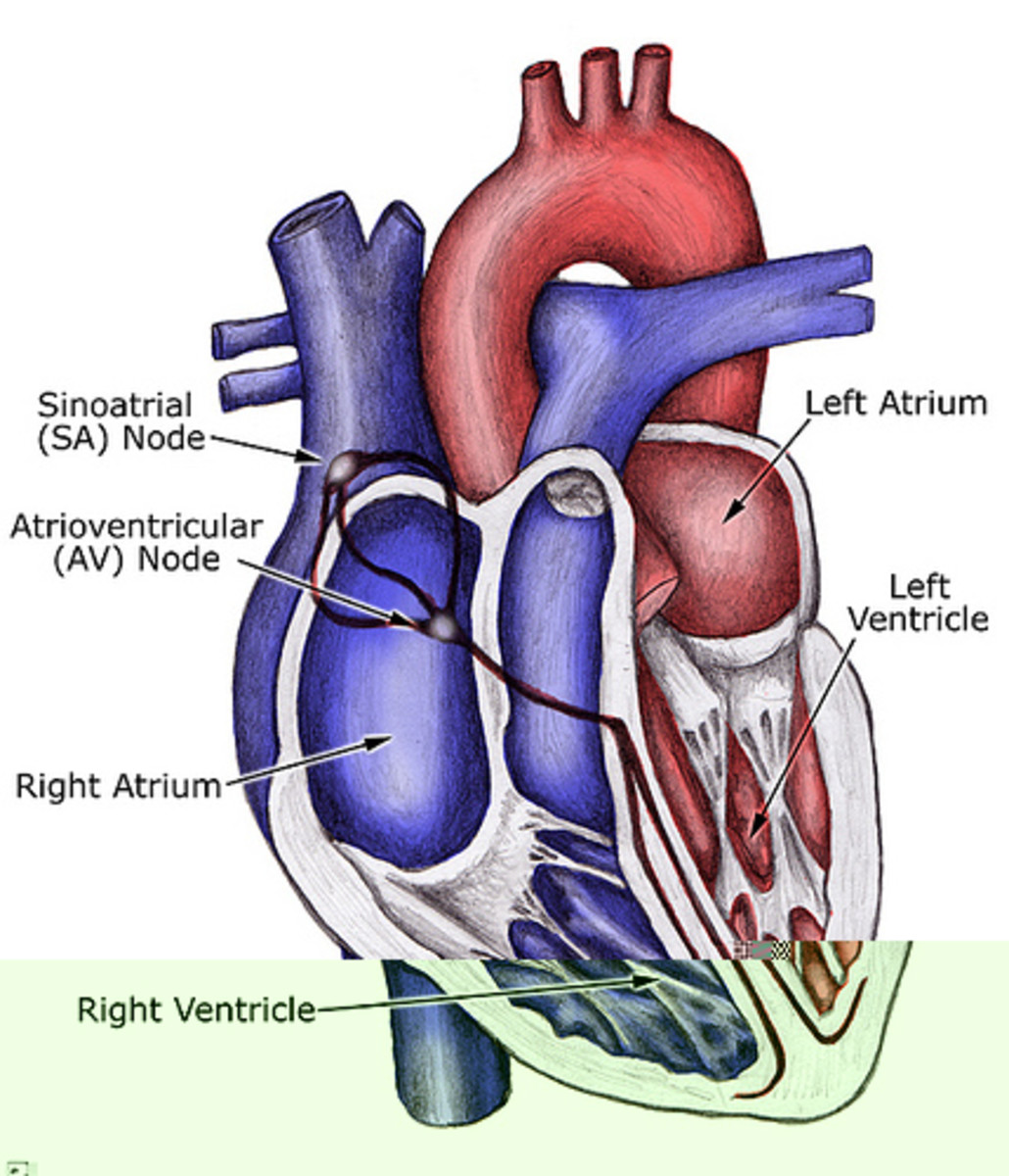Why Is Heart Disease the Number One Killer in the World?
Photo of cover of a book on chelation therapy
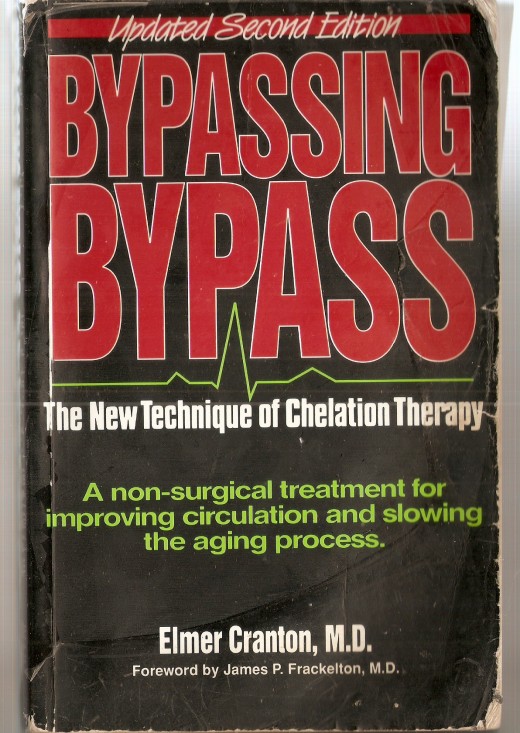
Reasons why heart disease is the number one killer in the world
Heart disease means narrowing of arteries that supply blood and oxygen to the heart muscles.
I am writing as a consumer. In fact I am a consumer because I am undergoing a curative mode for my myocardial ischemia, or narrowing of artery.
The obvious answer to the question at hand: heart disease has not been adequately controlled.
“Adequately controlled” means a lot.
Why is heart disease not adequately controlled?
One: heart disease is not well understood by conventional medicine.
Two: some remedies applied by conventional medicine are addressing symptoms of heart disease.
Three: treatment is the predominant approach to heart disease.
Fourth: effective prevention and cure have been relegated to the back seat.
Fifth: alternative approaches to heart disease are being resisted by conventional medicine.
Sixth: alternative prevention, treatment and cure for heart disease are not yet widely known and adopted.
These reasons why heart disease is not adequately controlled are not ranked from the most to the least important or according to a causal chain. Let’s look into each of these reasons.
Heart disease not well understood by conventional medicine
Conventional medicine has no theory of heart disease. By heart disease theory we mean an assertion consisting of concepts and relationships that explain heart disease. Concepts must be right and relationships should have been verified. We are using a model of theory provided by Albert Einstein who said: a theory consists of concepts and relationship between concepts (Einstein, A. Ideas and Opinions. 1954). We must modify ‘relationship’ to ‘relationships’ when we are dealing with more than one instance. In the formula E = mc2 there are three relationships, namely: is equivalent to, multiplied and squared. To illustrate:
E (energy) is a concept; m (mass) is a concept; c (speed of light) is a concept. Equivalent is a relationship; multiply is a relationship; squared is a subclass of multiply, it is a shortcut of speed of light multiplied by itself.
‘Right’ is an affair between a definition or statement of fact to what it is being defined or asserted. We start with any fact in the universe that is undefined (Russell, B. Human Knowledge: Its Scope and Limits. 1947). We should be aware of the fact that we are talking or writing or communicating with the use of a medium or symbol. In a natural environment, there is no symbol like the alphabet or an arrow sign or the sound you make when you read “This is red.”
A concept is right when it is verifiable or when what it stands for exists. For example, energy. “An entity convertible to mass exists” is right. We should be aware that terms, not words, are used to express a concept (Acuña, A. Philosophical Analysis. 1992). We will not go deeper into this. We only want to ensure that a concept is not fictitious, like the assertion, “A carabao is a four-legged animal that flies.” I have not seen or read about (except what I have just written) such an animal, so the concept 'carabao' is fictitious.
What conventional medicine offers is a definition of a heart disease, not a theory. (Alternatively, definitions of heart disease as there might be more than one.) The risk factors of heart disease do not constitute a theory.
“Coronary heart disease, also called coronary artery disease, is atherosclerosis of the coronary arteries, that is, the blood vessels that supply blood to the heart muscle itself. As we discuss later, in Chapter 13, exactly how atherosclerosis arises remains speculative, even though the disease process, including the consequences in such events as angina pectoris (chest pain), heart attack, and stroke, is a very familiar one. Since we have not yet defined the precise mechanism of atherosclerosis development, it is fortunate that we can identify factors that determine people’s risk for development of the disease” (DeBakey, M. MD and A. Gotto, Jr., MD. The New Living Heart. 1997:79).
In effect, Dr. DeBakey and Dr. Gotto had abandoned looking for the causes of heart disease. They continued:
“We do not have to know the exact mechanism for the development of a disease to be able to reduce risk for it. For example, the exact mechanism of lung cancer is not known, but the great majority of cases of lung cancer could be prevented through smoking cessation.”
The abandonment of search for causes of heart disease is justified with a questionable belief that smoking causes cancer. It is not the smoke or tar that causes cancer. It is the X-rays and free radicals that smoke contain that cause cancer; more of this later.
Risk factor
“A risk factor is defined as any trait or habit, whether genetic or environmental (which includes lifestyle factors), that can be used to predict an individual’s probability of developing a particular disease....” (DeBakey, M. MD and A. Gotto, Jr., same source as above).
If the pursuit for the causes of heart disease had been abandoned it follows that formulation of a theory of heart disease had been abandoned likewise. Risk factors (obesity, heredity, smoking, hypertension, age, cholesterol, lack of exercise) are not concepts and relationships that go into the making of a heart disease theory.
If you peruse any literature on heart disease in conventional medicine you come across the same risk factors. Risk factors belong in the logic of association that provide a low degree of certainty. They do not belong in the logic of causation that provide a high degree of certainty. In other words, risk factors are not causes. If you do not watch out, conventional medicine sometimes equates risk factors to causes. Sometimes "risk factor' is used synonymously as "cause." These are a mistake.
The risk factor school in heart disease is the basis of conventional medications, angioplasty and coronary artery bypass surgery (CABG). These are only modes of treatment in that they do not address the causes of heart disease. They address the symptoms only. A person who had CABG may develop plaque in the same artery or another artery or in the saphenous vein that had been used for bypass. A person who had been installed an angioplasty may develop another plaque in the same artery or another artery. There is recurrence of plaque formation because the causes of atherosclerosis had not been countered. You may read the book “The New Living Heart” to verify these assertions.
In their book “The Living Heart” published in 1977, Dr. DeBakey and Dr. Gotto wrote that heart disease is irreversible. In the sequel of their book “The New Living Heart” published in 1997, the same authors conceded that the plaque can be reversed by cholesterol-lowering drug and by lifestyle changes consisting in halt of smoking and consumption of saturated fats.
They entertained the speculation that virus might cause atherosclerosis.
Many a conventional doctor still believe that the plaque is irreversible. Several of them may not remember where they got that dictum but think of it as given. If you ask them who is the authority or the researcher who provided that piece of information they could not name anyone or they cannot cite a publication or book as reference. They may be able to cite a group or association like the American Heart Association. However, this association might have been influenced by Dr. DeBakey who is considered the foremost pioneer, if not the father, of CABG.
In the outside back cover of the book “The New Living Heart” you can read “’Dr. Michael DeBakey is unquestionably the father of cardiovascular surgery as we know it today [but] his love for surgery has never obscured his greater love for prevention and good health, as well as his compassion for patients....’”
It is not for lack of the capability to construct theories that had kept them satisfied with risk factors. Dr. DeBakey and Dr. Gotto wrote: “A number of theories have been proposed to explain the development of atherosclerosis, but no single one completely and satisfactorily accounts for all the observations that have been made about this disease. To be valid, any theory about the cause and development of atherosclerosis must be consistent with what is known about its relationship to age, sex, serum cholesterol, diet, and other risk factors, and its pathological characteristics” (DeBakey, M., MD and A. Gotto, MD The Living Heart. 1977:155, authors’ italics).
They discussed seven theories in this book, or rather hypotheses, but adopted none.
For example: “A theory involving trauma postulates that at points of stress in the artery or when there is a chronic increase in blood pressure, the endothelium may be damaged and its permeability to lipids increased. Mechanical trauma is very likely one factor that predisposes certain parts of the vascular tree to develop atherosclerosis, but it cannot explain the whole picture” (DeBakey, M., MD and A. Gotto, MD. The Living Heart. 1977:156).
By hypothesis we mean a scientific guess that serves as a guide for research; by theory we mean a hypothesis that had been proven true. A hypothesis has the same components as that of a theory like concepts and relationships between concepts. Einstein published a special hypothesis of relativity in 1905 and 1906. When it was verified by Fermi, Meitner and company in 1938 it graduated into special theory of relativity.
A theory of heart disease ensures effective prevention, treatment and cure of heart disease.
Some remedies applied by conventional medicine are addressing symptoms of heart disease
The popular symptom of heart disease is angina (chest pain). An immediate prescription to alleviate angina is nitroglycerin that dilates arteries allowing more blood flow to the heart. Nitroglycerin satisfies the oxygen demand of the heart and lessens such demand. But nitroglycerin has nothing to do with the plaque; it does not reverse it. When the same person suffering from narrowed artery exerts himself again his angina recurs. Nitroglycerin is not a cure but a treatment.
A prescribed calcium channel blocker slows down the entry of calcium into the cell; aspirin prevents blood clot; heparin thins out blood; diazepam or lexotan calms down a patient in case of a hypertension episode. But these medications do not stop free radicals from exacerbating angina and adding to the plaque. They do not reverse plaque. Free radicals oxidize low-density lipoproteins and turn them into bad cholesterol that add to the blockage. Aspirin can cause ulcer or internal bleeding. You will have to take them for life if heart attack does not overtake you. If your situation worsens (more angina episodes) you will be advised to get angioplasty or go under the knife for surgery.
Angioplasty is an invasive remedy for angina and a preventive measure for heart attack. Balloon angioplasty or with stent widens the part of the artery with a plaque. However, angioplastied artery without a stent may close up again; another plaque may develop in another part of the same angioplastied artery; or another artery may develop plaque, according to Dr. DeBakey and Dr. Gotto. The inner wall of the artery may grow around the stent (a fine mess of wire used as prop) resulting in occlusion of the artery. So angina may recur and the possibility of heart attack is always present. The reason is that the cause of plaque is not addressed.
The invasive coronary artery bypass graft surgery (CABG) is recommended by conventional medicine for severe plaque. A plaque might have partially or completely blocked an artery. A saphenous vein (from a foot) or an internal mammary artery (from the breast) is grafted on the artery to bypass the plaque. (I am giving short descriptions of these procedures only; one can read “The New Living Heart” or any other book on these subjects for more details). However, the same bypassed artery may develop another plaque, or another plaque may develop in another artery. CABG, like angioplasty, does not counter the ultimate cause of plaque. It is treatment only. So, a person who had angioplasty or CABG is not removed from the statistics of possible angina and heart attack.
Treatment is the predominant approach to heart disease
Treatment does not remove a person from the roster of possible victims of angina and heart attack. CABG is not a guarantee of longer life.
“Restenosis and occlusion of the vein grafts begin to appear within 5 to 10 years after operation” (Dr. DeBakey and Dr. Gotto, The New Living Heart, page 279).
In angioplasty, "complications occur in only 2 to 5 percent of patients. The most serious complication is the sudden closing of an artery. Doctors may use drugs, a flexible guide wire, angioplasty, a stent, or surgery to open the vessel again....
"Initial success rates are high - the interior diameter of the vessel is enlarged; the high local pressure on the vessel is reduced; symptoms associated with poor blood supply to the heart muscle (myocardial ischemia) are moderated or eliminated; and surgery is avoided. However, the vessel narrows again in a significant proportion of patients within three to six months (DeBakey, M., MD and A. Gotto, Jr., MD. The New Living Heart. 1997:201-202).
I am more reluctant to do an angiogram if the patient has a history of any kind of bleeding or kidney disease, because the dye we use in angiography to visualize blockage can make kidney function worse.... according to Dr. John Ambrose, an angiologist at the Mount Sinai Hospital in New York (Stein. T. A User's Guide to Heart Bypass Surgery. 1996:75-80).
Effective prevention and cure have been relegated to the back seat
Prevention of angina and heart attack has focused on the risk factors. One recommendation is to consume less fat. However, even one with a high cholesterol level may or may not develop angina or heart attack. One recommendation is halt in smoking. This preventive measure is sound but the explanation for it is wrong. The smoke or tar from the cigarette is not a cause of heart disease per se. It is the free radicals and X-rays from the smoke that cause heart disease. Engaging in exercise is a sound piece of advice both for conventional and alternative medicine.
(I have a Hub "How Free Radicals and X-rays in Cigarette Smoke, Not Tar, Cause Cancer And Heart Disease").
Conventional medicine has virtually abandoned cure. Most doctors in conventional medicine still believe that the plaque is irreversible. Even if Dr. DeBakey and Dr. Gotto wrote in “The New Living Heart” that the plaque is reversible by cholesterol-lowering drug and lifestyle changes, they have not elaborated a protocol in reversing plaque.
By cure we mean when medication is applied for a disease it should not recur. A medication for hypertension should prevent hypertension from recurring. That is, hypertension goes away.
Angioplasty and CABG are big events in terms of expertise of cardiac surgeons, in terms of trauma and expense on the part of the patient. And yet they are only treatments, not cures.
Alternative approaches to heart disease are being resisted by conventional medicine
I hope Hubpages will allow the long quotes that follow and that I used with some modifications in another Hub “Why Is Conventional Medicine Antagonistic To Chelation Therapy?” The purpose is to avoid unintended falsification.
“Another treatment promoted with miraculous claims is ‘chelation therapy’ This involves intravenous injection of a synthetic amino acid (EDTA) into the blood stream where it is supposed to remove unwanted mineral deposits of ‘toxic metals’ from various part of the body before exiting via the kidneys. Vitamins, minerals, and other substances are used also. A course of treatment may consist of twenty to fifty infusions and cost thousands of dollars.
“According to its promoters, chelation therapy can reverse or prevent the accumulation of fatty deposits (atherosclerosis) in the coronary arteries and elsewhere in the body. Some promoters refer to it as a ‘chemical roto-rooter’ and ‘a way of producing a powerful rejuvenation of cell functions.’ Other promoters claim that it worked by decreasing the body’s production of ‘free radicals.’ None of these claims is valid.
“Chelation therapy is used most often in cases of heart disease but is also claimed to be effective against kidney disease, arthritis, Parkinson’s disease emphysema…. However, no controlled trial has shown that chelation can help any of these conditions. In 1985, the American Heart Association concluded that chelation therapy is unproven for heart disease and can be dangerous as well. If I were you, I would steer clear of anyone who does chelation therapy or even recommends it” (Alper, P. R. "Avoiding the 'Marginal' Medic." Barrett, Stephen, MD and William T. Jarvis, Ph.D. Editors. The Health Robbers.1993:134-135).
Proponents of chelation therapy should speak for themselves, like Dr. Canton and Dr. James P. Frackelton, MD. You can read their updated article on chelation therapy by accessing the internet with the search entry, cv chelation therapy cranton frackelton.
Of the American Heart Association, Dr. Cranton and Dr. Frackelton, in part, say:
“In retrospect it appears that the NCHCT (National Center for Health Care Technology) based its conclusions on statements by cardiovascular surgeons, the American Heart Association and from the American College of Cardiology, on the assumption that those groups represent experts in the field of EDTA therapy. The opposite is true. Most practicing cardiologists and surgeons have little or no professional expertise in the use of EDTA therapy for cardiovascular disease…They have consistently voiced strong prejudice and opposition against allowing chelation therapy to encroach on their turf” (Cranton, E. M., MD and J. P. Frackelton, MD. Current Status of “EDTA Chelation Therapy in Occlusive Arterial Disease.” Internet April 30,2012, parenthetical supplied).
Another American provided a clue why conventional medicine is antagonistic to one alternative approach to heart disease, as follows:
“Free spending mentality took hold in the 1970s and 1980s, and the treatment of heart disease (by CABG) was seen not just as an urgent medical priority but also as an economic bonanza. Drug companies, medical-equipment makers, cardiologists, and heart surgeons all kept widening the circle of patients they treated, some time leading to unnecessary procedures and inflated ‘demand’ for their services. Providers also learned that their lifesaving work could fetch stunning prices, far in excess of the direct costs. As a result, ostensibly not-for-profit hospitals salted away millions in earnings from highly profitable cardiac units. Heart surgeons earning $1 million or more a year began collecting Jaguars and fine art. Pharmaceutical companies posted giant profits and bathed their executives in luxury. Meanwhile, patients muttered in disbelief at $100-a-month prescription drugs and $1,500 tests of heart function. But they or their insurance carriers kept paying. Total spending on treatments for heart disease has surged to the point that it is currently more than $117 billion a year, equivalent to the gross national product of Sweden” (Anders, George. Health Against Wealth. 1996:95, parenthetical mine).
In 1978, CABG done on 25,000 patients were unnecessary (Cranton, E., MD. Bypassing Bypass. Updated second edition. 1995).
There are other alternatives. One Hubber says taking vitamin C prevents and reverses plaque that he adopted from a book by Dr. Paul Pauling, a two-time Nobel Prize winner. Another alternative is taking magnesium dolomite that was done by James Pierce, Ph. D. He related the theory and his experience in his book “Heart Healthy Magnesium.”
Alternative prevention, treatment and cure for heart disease are not yet widely known and adopted
Alternatives are based on the theory that free radicals cause mutation in the DNA of a cell that can result in tumor and cancer.This theory is as follows (concepts are in bold letters, relationships are in bold italics):
Free radicals cause the injury in the inner wall of the artery that result in a benign tumor called atheroma. As a way to repair atheroma bad cholesterol, collagen, fibrin, elastin and other debris converge upon it. Calcium apatite later joins in that serves as cementing agent. Their combination grows into a plaque.
(I have a Hub "A Theory of Heart Disease That Ensures Effective Prevention, Treatment and Cure of This Disease).
The one concept that Dr. DeBakey and Dr. Gotto did not find was the cause of the atheroma, free radical. If they found that, no doubt they could have constructed a theory of heart disease. However, conventional medicine ignores free radicals as causes of disease up until now. But conventional medicine is aware of free radicals; it does not recognize them as causes of disease.
These authors came very close to recognizing free radicals. Take a look into the following:
"Oxidized or otherwise modified LDL is able to induce endothelial cells to secrete a substance that promotes the migration of macrophages or monocytes (which are types of blood cells) from the bloodstream into the arterial wall. This is believed to be a key step in atherosclerosis formation....The macrophages produce various substances that contribute to a type of inflammatory reaction...." (DeBakey, M. MD and A. Gotto, Jr. MD. The New Living Heart. 1997:189).
'Oxidized' is like one side of a coin, oxygen, whose other side is free radical. In the first place, It is impossible that conventional medicine is not aware of free radicals.
To digress a little bit for an illustration: Molecular oxygen, designated as O22-, is the variety of oxygen that we breathe. Already, O22- is a free radical. However, it is not so destructive in this form, or most of it is readily used up in metabolism, 25 percent are exhaled. O22- when involved in the metabolism of glucose transforms into a variety that is a building block of harmful oxygen derivatives. Cytochrome system produces energy, adenosine triphosphate (ATP), which consists of some eight steps that falling water has to go through, as it were. At the top of the falls, hydrogen is split into electron and proton that goes on stand by. The electron goes through an electron transfer that falls down the eight steps that is surrounded by abundant molecular oxygen. The falling electron produces energy. Some free falling electrons escape the cytochrome system. At the foot of the falls molecular oxygen waits for the falling electron then snaps it, one unpaired electron of O22- grabs it. Molecular oxygen now turns into superoxide, indicated as O2-. Note that only one unpaired electron remains. Some O22- that had snapped the falling electron, joined in by the proton on stand by, turn into water. O22- that had snapped an escaped electron at the falls turn into superoxide. One cycle of this process produces 38 ATPs.
In a way, molecular oxygen waiting at the bottom of the falls pulls down the free falling electron. If there were no oxygen at the bottom, the system backs up and a miserable amount of energy is produced; only two ATPs which is not enough to sustain life. That is what happens when the heart is starved for oxygen. Result? Angina at best or heart attack at worst.
Conventional medicine has mastered this process of energy production that is the only way to sustain life of man. Any examinee in a licensure examination for the doctor of medicine who cannot give a correct answer if this is part of the exam does not deserve to be given a license to practice medicine.
A superoxide when it reacts with another superoxide catalyzed by superoxide dismutase results in hydrogen peroxide. This is a reactive oxygen species (ROS) that acts like a free radical in that it grabs an electron from a molecule. Superoxide when it reacts with nitric oxide produces peroxynitrite, another ROS. When one superoxide reacts with another superoxide in the presence of iron, hydroxyl radical is formed. Hydroxyl radical is the most destructive of free radicals. There are more siblings of superoxide. Suffice it to say that conventional medicine has no way to escape from free radicals and the harm that they can do. There must be another factor that blocks its eyes or make it pretend it does not see free radicals as harmful in some situations.
What harm does peroxynitrite (ONOO-) inflict? Notice the negative superscript which means that peroxynitrite can grab an electron. It grabs nitric oxide three times faster than nitric oxide (NO), the form produced by endothelium nitric oxide synthase (eNOS), is formed. That means it depletes eNOS/NO which is the messenger that induces the dilation of artery, needed during angina. It means, further, that peroxynitrite exacerbates hypoxia or lack of oxygen that goes to the heart resulting in angina or heart attack.
Superoxide is a master free radical because when it reacts with other derivatives of oxygen it forms free radicals and reactive oxygen species.
Let us interpret the above quote from conventional medicine under the prism of free radical theories of disease.
'Oxidized' means free radicals grabbed electrons from LDL (low-density lipoprotein). Oxidized LDL means the fatty acids are turned by free radicals into LDL-ox which are now free radicals themselves, a chain reaction. Macrophages, components of immune system, engulf these LDL-ox making them foamy that cling to the arterial wall (Sharma, H. Freedom from Disease. 1993:83-85). Macrophages mediate inducible nitric oxide synthase to catalyze the production of nitric oxide (iNOS/NO), a free radical, that induces inflammation.
The germ theory of disease held Dr. DeBakey and Dr. Gotto from jumping into the concept of free radicals causing injury in which case they would have switched over to the free radical theories of disease. It was a small quirk but it would have been a big intellectual jump. We are reminded of the cliché "A small step a big leap for mankind." The divide that holds doctors in two separate camps of the risk factors school and free radical school in medicine would be remote. And the present circumstances of heart disease being the top killer in the world would not hold. This is one of "what if" in the world today.
The advance of researches on free radicals is now on the march. For example on the research on nitric oxide, a free radical. Earlier on, Robert Furchgott found that the endothelium, the one-cell inner layer of the artery, released a messenger that dilates the artery. He called it endothelium-derived relaxation factor (ERDF). Ferid Murad found that nitroglycerin produced nitric oxide. Louis Ignarro found that ERDF and nitric oxide are the same. The three shared the Nobel Prize for Medicine in 1998. Before, how nitroglycerin alleviates angina could not be explained; their work provide an explanation.
Research on nitric oxide (NO) has resulted in the findings that three enzymes act on L-arginine and produce three varieties of nitric oxide. The enzyme endothelium nitric oxide synthase (eNOS) produces NO; neuron nitric oxide synthase (nNOS) produces NO; inducible nitric oxide (iNOS) mediated by macrophage produces NO (Spieker, L.S. et al. “The Vascular Endothelium in Hypertension.” The Vascular Endothelium II.2006:249-269). . The NO of eNOS is a free radical that signals the artery to dilate. The macrophage shoots microbes and infections using NO like bullets resulting in inflammation.
I have Hubs on free radicals, like "Framework And Treatment Of Heart Disease: Free Radicals (Chelation Therapy) Versus Risk Factors (Heart Bypass Surgery)."
Antioxidants neutralize free radicals resulting in prevention of plaque. Chelation therapy dissolves plaque resulting in treatment and cure of heart disease. Likewise, nutriceuticals help in the treatment and cure of heart disease.
Alternatives are not widely adopted owing partly to antagonism by government that is advised by conventional medicine. In the Philippines, I applied for a second support for my chelation therapy from the Philippine Charity Sweepstakes Office, a government agency granting support for medications. My request was rejected on the grounds that this office supports angioplasty and CABG, not chelation therapy.
The situation is exacerbated in the United States by the proliferation of health maintenance organization (HMO). HMO and insurance companies consider chelation therapy as experimental and do not pay for it.
It is unlike the administration of Salk killed poliovirus vaccine or the oral polio vaccine invented by Dr. Albert Sabin. The incidence of polio reached epidemic proportions in the United States in 1916 (27,000 polio victims), the number of victims peaked in 1952 at 57,879. Dr. Jonas Salk began a typing research of polio in 1948 at the Pittsburgh University laboratory. The Salk vaccine was launched in 1955 (at 28,985 victims) by the government of the United States; it has been responsible for the control of polio that no incidence of polio in the same country has been reported since 1999 (Klugger, J. Splendid Solution, Dr. Jonas Salk and the Conquest of Polio. 2009). Even before the final trial in the development of Salk vaccine kicked off the U.S. congress had already completed a congressional hearing deciding that vaccination would be interstate that was accepted as constitutional.
CABG was hyped even by President Kennedy, compared to the Apollo moon landing program, according to George Anders. No presidential hype on any alternative prevention, treatment and cure for heart disease. These alternatives are now available at low costs.
We now have the theory, prevention protocol, treatments and cures of heart disease to move it down as the number one killer in the world.
New entries as of June 17,2014
USA has announced that chelation therapy is safe and effective for the treatment of heart disease. (I have a Hub on this topic).
The Institutes of Health (Institute of Heart, Lungs and Blood) of the USA conducted a study called "Trials to assess chelation therapy" (TACT). This was launched in 2002. Results were presented at a meeting of the American Heart Association on November 4,2012 at Los Angeles, California. Another beneficial effect is that chelation therapy also treats diabetes as some of the participants in the study who were suffering from diabetes got well of diabetes.
Hubs on chelation therapy by conradofontanilla
http://conradofontanilla.hubpages.com/hub/Why-Is-Heart-Disease-The-Number-One-Killer-In-the-World
http://conradofontanilla.hubpages.com/hub/What-For-Is-A-Theory-of-Heart-Disease
http://conradofontanilla.hubpages.com/hub/How-To-Treat-Stroke
http://conradofontanilla.hubpages.com/hub/What-Would-I-Do-If-I-Had-a-Heart-Attack


